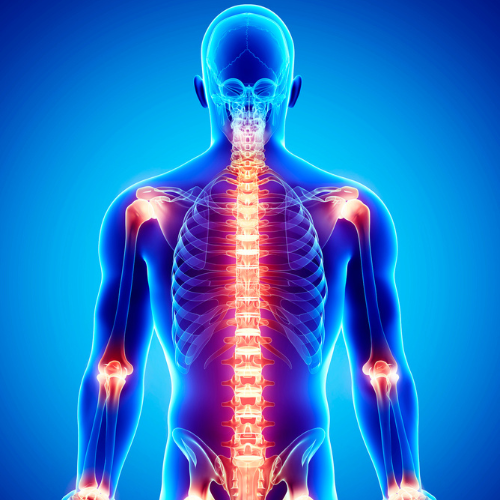How to Create a Pain Management Plan

Living with chronic pain is not just a matter of dealing with discomfort. Such pain can interfere with work, relationships, family time, and even hobbies. Designing an effective pain management plan can act as a blueprint to maintain your physical and mental health.
The process of creating a pain management plan involves an individualized and collaborative effort, starting with understanding the specific pain triggers, aligning the treatment options that suit individual needs, and regular monitoring for necessary adjustments.
Keep in mind that the ultimate objective is to find a strategy that works for you. Read on to learn how to create an effective pain management plan.
What Is Chronic Pain?
Chronic pain, which affects millions of Americans, is not just a prolonged period of discomfort. It is a pain that lasts longer than the body's normal healing process, typically persisting for months or even longer.
Unlike acute pain, which acts as a warning to your body, chronic pain often remains even after the initial injury or illness has healed. Its pervasiveness and longevity can drain energy and motivation, hinder work, affect relationships, and intensify depression or anxiety symptoms.
What Causes Chronic Pain?
Common causes of chronic pain include, but are not limited to:
- Arthritis
- Nerve damage (Neuropathy)
- Back injuries
- Fibromyalgia
- Migraines and other headaches
- Infections
- Past surgeries or injuries
What Are the Tools and Methods for Pain Assessment?
Before creating a personalized pain management plan, the first step is to talk to your specialist about your pain and then try to find out what causes it and the patterns related to it. There are some effective tools and methods to keep track of the symptoms associated with your pain and evaluate pain levels.
Pain Diaries
Pain diaries allow you to keep track of your pain experiences daily, noting details such as pain intensity, location, and possible triggers. Over time, this information will help you and your physician recognize patterns that impact your treatment and note successful parts of your treatment that reduce your pain.
Here are some key observations to include in your pain journal:
- Write the date and time of the day
- Give your pain a scale rating
- Be as descriptive as possible
- Note the location and duration of your pain
- Make a list of what you ate and drank
- Record additional symptoms and how you feel
Pain Scales
They offer a straightforward method to quantify your pain levels. Commonly, providers ask you to rate your pain on a scale from 0 to 10, with zero representing no pain and ten symbolizing the worst pain imaginable.
Doctor Consultations
Regular consultations with your healthcare provider are essential for creating an effective pain assessment. These consultations allow healthcare providers to gather information about your pain experiences, review your pain diary, evaluate your responses to current treatments, and determine if adjustments are needed in your pain management plan.
How to Create a Comprehensive Pain Management Plan
Developing a comprehensive pain management plan is a complex task, but with high levels of intentionality, openness, and collaboration, it's achievable. The key component of any pain management plan is understanding your condition and symptoms.
Here is a step-by-step guide to help you understand how a well-rounded strategy can provide effective pain relief and enhance your overall quality of life.
Set Realistic Goals and Expectations
Setting realistic, achievable goals is an integral part of any successful pain management plan. Understand that the aim of pain management isn't necessarily to eliminate pain entirely but to control it enough to improve the quality of your daily life and enable you to perform daily activities with ease. It's also important to realize that managing chronic pain is a process, not an immediate fix.
Incorporate Multiple Pain Management Techniques
A comprehensive pain management strategy doesn't rely on a single method to control pain. Instead, it incorporates a blend of different techniques to provide relief. This may include a mix of medication management, physical therapy, behavioral strategies, and alternative therapies like acupuncture or massage. Using multiple techniques increases the chances of finding a successful combination that addresses your unique pain experience.
Develop Strategies for Dealing with Potential Challenges
Chronic pain management will often present challenges such as periods of intensified pain, decreased effectiveness of a particular treatment, or emotional tolls like depression or anxiety. Prepare resources to help effectively navigate these bouts. These resources might include a responsive healthcare team, supportive relationships, or coping techniques like meditation, relaxation exercises, or cognitive-behavioral therapy.
Plan for Regular Evaluations and Adjustments
Pain management is not a 'set it and forget it' plan. It requires regular evaluations to monitor the progress and effectiveness of treatments. Be prepared for adjustments to your plan based on these findings. Your healthcare team will regularly review your pain diary, pain scale data, physical function, and overall emotional well-being to ensure that your plan continues to be tailored to your evolving needs.
What Are Pain Management Options?
Pain management approaches are as diverse as the types of pain people experience and typically involve a combination of techniques. They range from medication management to alternative therapies, each with unique benefits and applications.
Medication Management
Medication is often the first line of defense against pain. Depending on the type of pain, prescription or over-the-counter medications may provide relief. It's essential to follow your provider’s instructions when taking these medications and to discuss any potential side effects.
Physical Therapy
Physical therapy can reduce chronic pain and improve posture and overall body function. Therapeutic exercises aim to strengthen the body and reduce pain, giving the patient more control over their own treatment.
Coping Strategies
Coping strategies like relaxation techniques, meditation, and deep breathing can change how you react to physical discomfort. These techniques can aid in managing chronic pain and associated mental health challenges, such as anxiety and depression.
Cognitive-Behavioral Therapy
Cognitive-behavioral therapy (CBT) can be hugely beneficial for managing how your mind reacts to pain. CBT works by altering negative thought patterns, teaching effective coping strategies, and changing the way you perceive your condition.
Alternative Therapies
Alternative therapies such as acupuncture and massage provide other avenues for pain management. Some patients find significant pain relief and improvement in body functions from these hands-on treatments.
Developing an effective pain management plan requires open and honest communication with your healthcare provider. If you or a loved one is living with chronic pain, schedule a consultation with our experts at
Pain Treatment Centers of America. Don’t wait any longer and
contact us!













